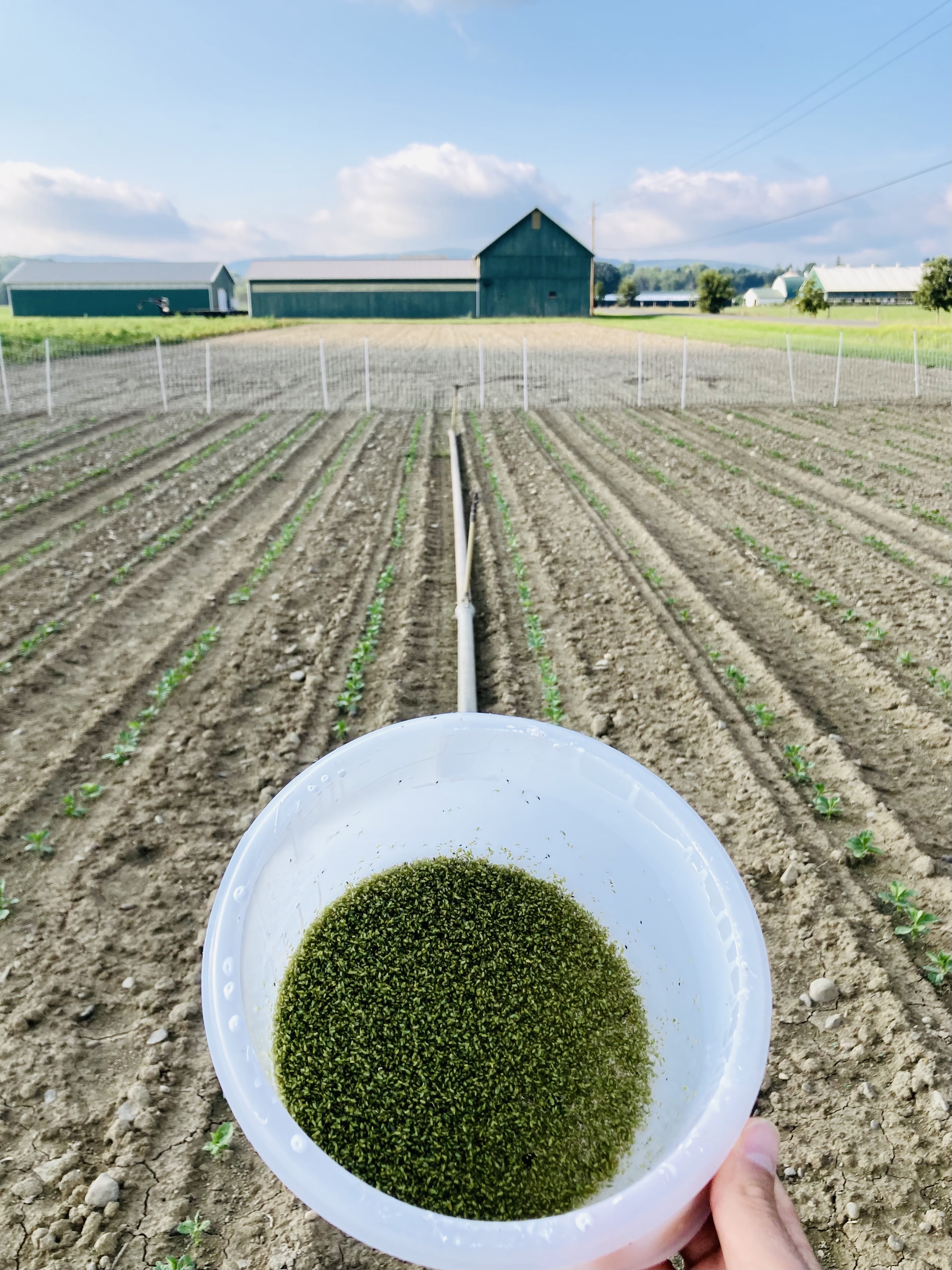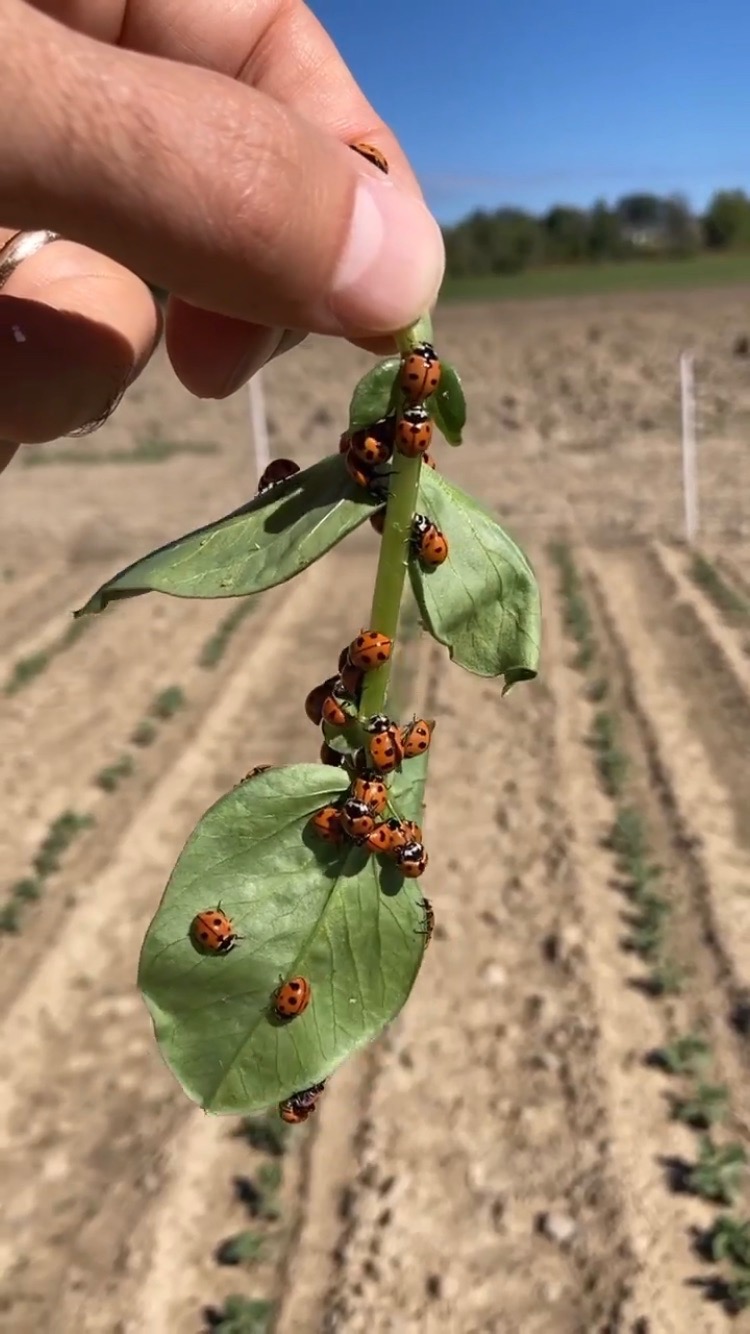About This Project
The introduction of non-native lady beetles into North America led to the disappearance of several once-ubiquitous species including the New York State insect, the ninespotted lady beetle. Our goal is to sequence the genome of this iconic species and characterize key differences between it and its main antagonist, the introduced sevenspotted lady beetle. These data will help us understand why the ninespot declined and help facilitate our restoration, conservation and education programs.
Ask the Scientists
Join The DiscussionWhat is the context of this research?
The ninespotted lady beetle was once distributed across North America and was one of the most abundant species. Following the introduction of the sevenspotted lady beetle from Europe in the 1970s, the ninespot virtually disappeared. East of the Mississippi River it is now found in a single location, and this species is listed as endangered in Canada.
Beetles from the last remaining eastern population co-exist with their main antagonists, the sevenspotted lady beetle and the Asian lady beetle. We hypothesize that this population of ninespots maintains genetic traits that allow them to persist alongside their antagonists. Sequencing the genome of the ninespot will allow us to identify and track traits in the wild to assist our conservation and restoration programs.
What is the significance of this project?
Biodiversity is a keystone of pest management in agriculture. Lady beetles are key predators and help farmers by consuming pests in many crops.
When the number of lady beetle species goes down, so does the efficiency of pest control. This is because predator species occupy slightly different niches within the landscape and consume different, but sometimes overlapping groups of prey, and they forage on different plants and plant parts. Having a diverse group of predators ensures farmers get the best possible pest control.
Understanding what genetic traits allow the last remaining ninespots to persist with their antagonists will aid our effort to reintroduce and track their success and better understand global insect declines more broadly.
What are the goals of the project?
The funds will be put to immediate use to sequence the genome of the ninespotted lady beetle. We will then characterize differences between it and its very close and antagonistic relative the sevenspotted lady beetle, whose genome has already been completed. These data will be used to complement our research and education programs at the Lost Ladybug Project –our citizen science program where we identify and monitor populations of rare and declining lady beetle species.
Ultimately, we hope to restore this iconic species across as much of North America as we can and use our new data to help educate the public about the importance of insect predators in their everyday lives and biodiversity at large.
Budget
Genome sequencing has become increasingly more affordable, however it is not inexpensive. The highest quality genomes are created using long-read technology like PacBio HiFi and Oxford Nanopore systems in tandem with chromatin-based sequencing like HiC. Obtaining high quality genomes is the first step in comparative genomics and allows for more complete comparisons with other closely related species, which is one of our main objectives.
The funds provided by this program will comprise 100% of the total cost of the genome sequencing project. Having the ninespotted lady beetle genome in hand will allow us to apply for much larger grants that will assist in our genome characterization and field-based restoration work.
Endorsed by
 Project Timeline
Project Timeline
The key to success for this project is funding.
Our laboratory keeps a colony of this rare species for research and specimens for DNA extraction are readily available at all times.
Genome sequencing and assembly services are readily available at multiple institutions across the United States.
Upon receipt of funding, we will grow, flash-freeze and send samples of lady beetles to be sequenced.
Normal turn-around for genome sequencing is typically 1–3 months.
Sep 20, 2022
Project Launched
Oct 31, 2022
Grow and flash-freeze adult lady beetles; growth to the adult stage takes about 21 days.
Nov 07, 2022
Send lady beetle samples to sequencing facility for library prep and PacBio HiFi long-read sequencing.
Dec 20, 2022
Update project backers on sequencing progress
Jan 01, 2023
Begin comparative genomics project including characterization of chemosensory genes.
Meet the Team
Todd Ugine
Dr. Ugine is an entomologist at Cornell University. He has been studying lady beetles and their decline as a member of the Lost Ladybug Project since 2012. He is the driving force behind the genome sequencing project, the ninespotted lady beetle restoration project, and he conducts research at the nexus of lady beetle nutrition and chemosensation.
Additional Information
The Lost Ladybug Project is a citizen science program that tracks populations of all lady beetles across the United States. Project participants take photographs of lady beetles and upload them using the Lost Ladybug Project app, or by uploading them to our project website. Our experts then identify the lady beetle species and add the photo to our image database. This allows us to better understand where lady beetles can be found, including rare species, and the frequency at which they occur.
Outreach and Education: Our outreach and education programs are focused on educating the public about the importance of biodiversity, conserving lady beetles and natural habitats for all animals. We regularly give talks to our program participants and to the community at large on the progress of our restoration work. We also send out hundreds of ninespotted lady beetles to our program participants in New York State to complement our species restoration work.
Restoration: This past summer, for the first time, we are running an on-farm restoration project. We are trying to reestablish the ninespotted lady beetle in a single location in upstate NY. We planted a field of fava beans on a research farm at Cornell University and seeded it with pea aphids –a favorite food of lady beetles. One week later we came back and released 500 mated adult ninespotted lady beetles. We intend to plant another field of beans in the same location next spring and will check it regularly for ninespotted lady beetles. Our hope is that we find some adults, which will indicate that we have viable reproductive population –only the second population that we know of east of the Mississippi River.


Project Backers
- 24Backers
- 100%Funded
- $6,000Total Donations
- $250.00Average Donation



